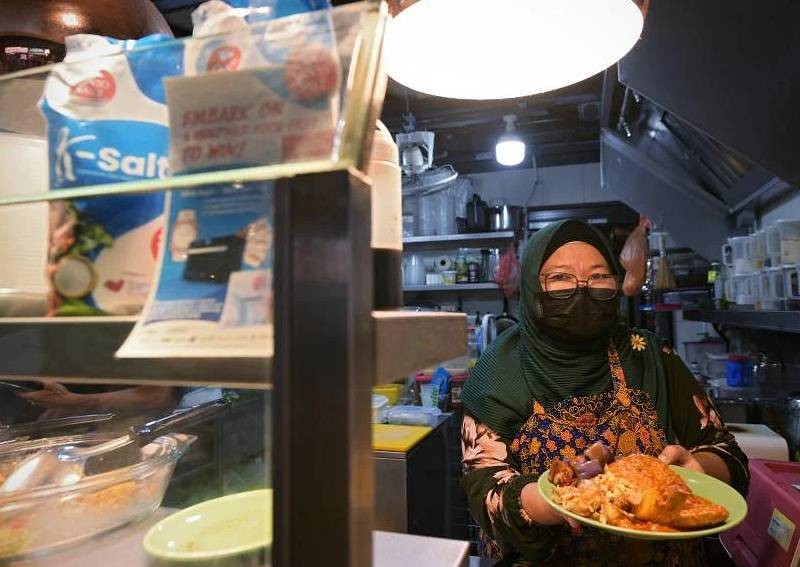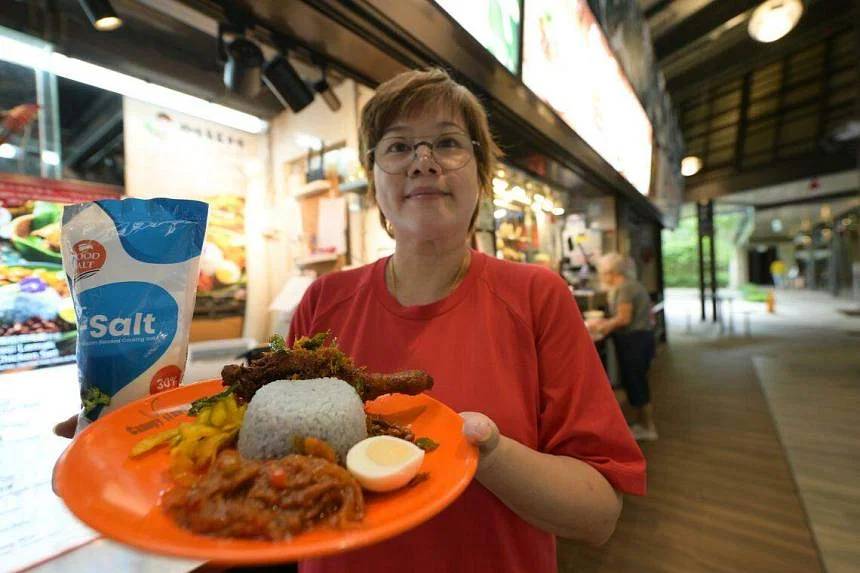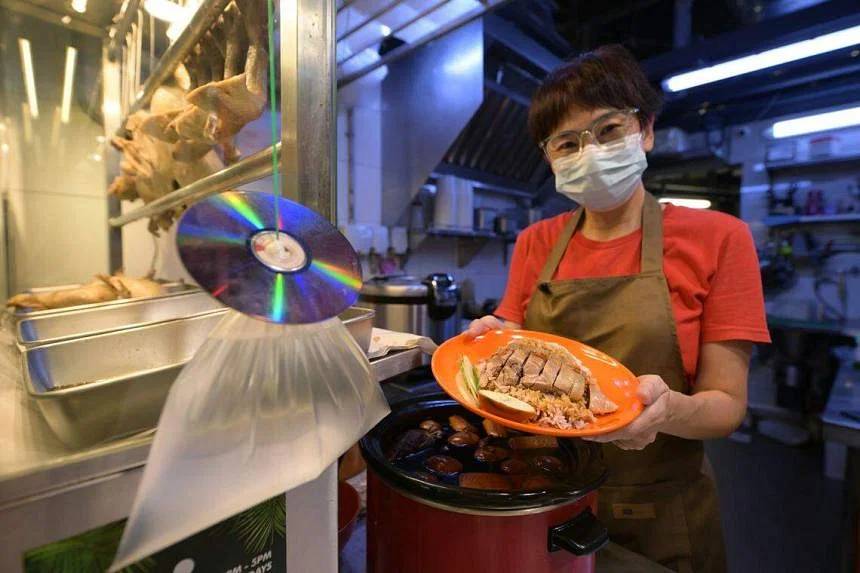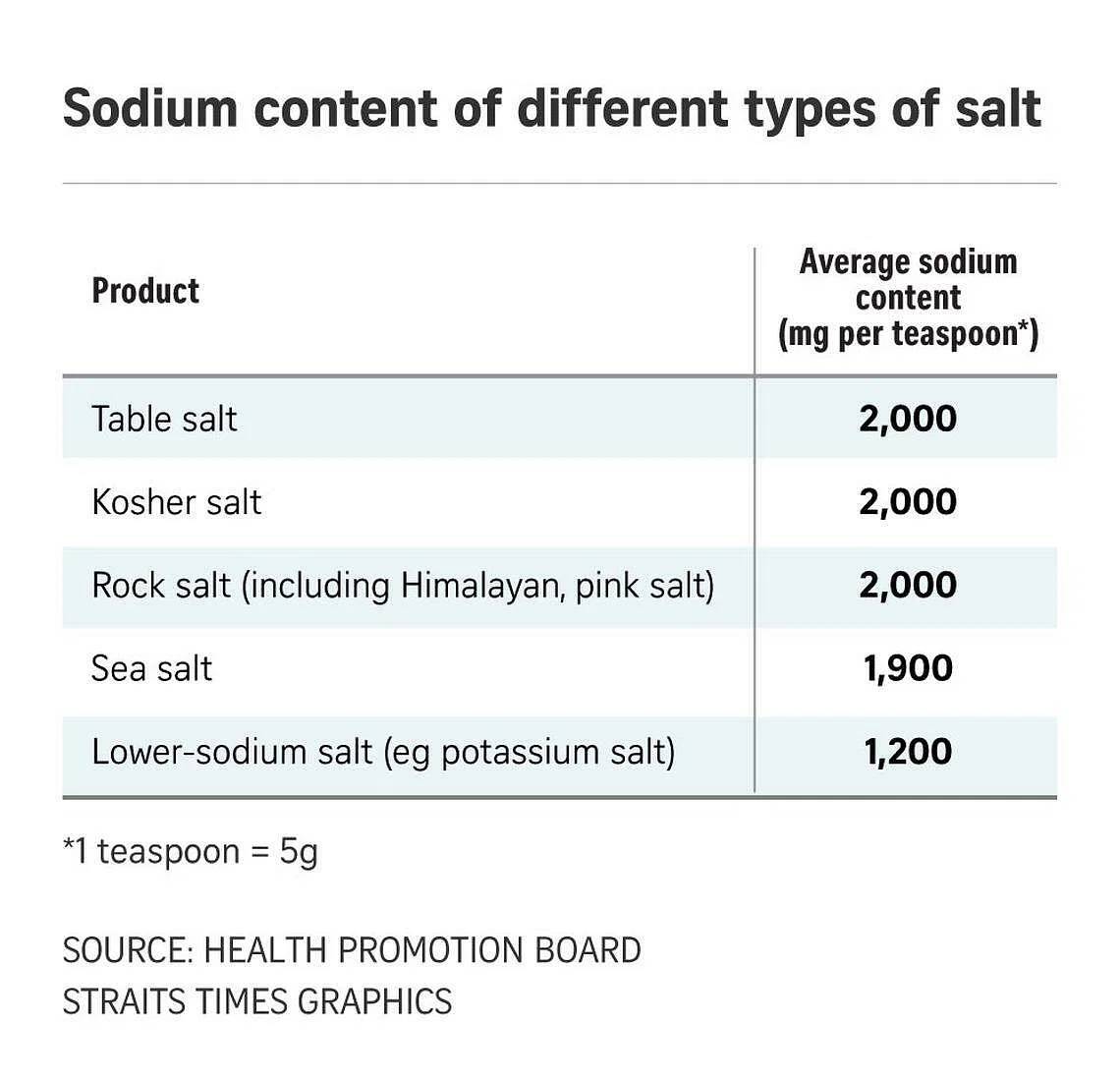Too salty: Some hawker foods can raise heart attack, stroke risk


SINGAPORE – You had mee soto, seafood hor fun, mutton briyani or a chicken burrito for lunch? It’s likely you busted the recommended daily amount of 2,000mg, or less, of sodium with that one meal.
Chances are your blood pressure went up as salt causes water retention, resulting in a larger volume of blood that damages the blood vessels and puts pressure on the heart.
Over time, this raises your risk of getting a heart attack or stroke. One in three adults here aged between 18 and 74 years old has high blood pressure.
The occasional high-sodium meal is not likely to kill you. But surveys have shown that Singaporeans are eating far too much salt, averaging 3,620mg of sodium a day. One teaspoon of salt (6,000mg) contains about 2,326mg of sodium.
According to the Health Promotion Board (HPB), 31 per cent of dine-out dishes contain more than the daily recommended 2,000mg of sodium.
In 2022, it intensified its push to get hawkers, restaurants and caterers to adopt lower-sodium salt in their cooking. It also extended support to salt suppliers “to increase the range of affordable lower-sodium salt products”.
HPB gives companies on the Healthier Ingredient Development Scheme (HIDS) up to $500,000 per project to develop or improve, as well as market, products with the healthier ingredients.
An HPB spokesman said that with HIDS, “the wholesale prices of all lower-sodium salt and most lower-sodium sauces supplied to food operators are currently comparable to that of regular versions”.
[[nid:650667]]
At the Bukit Canberra Hawker Centre, which is in Health Minister Ong Ye Kung’s ward, 28 of the 40 food stalls use lower-sodium salt, making it one of the healthiest food centres in the country.
Surayah Omar, 60, who runs Meal Logi, selling Malay food, said she uses the lower-sodium K-salt both for the food she sells, and at home. She also uses cooking oil that carries HPB’s healthier choice logo for oils that contain lower amounts of saturated fat.
She said: “We think of our own health, so we must also think of our customers’ health.”
Christine Lock, 48, who runs Pangkor Island Nasi Lemak, said she uses the lower-sodium salt not only for seasoning but also to wash her chickens. She uses some 24kg of salt each month.
“Nobody knows that I’m using the healthier salt,” she said, noting that while it does not compromise the taste of her food, it is not a selling point for customers.

With help from HIDS, hawkers pay $1 for 1kg of the K-salt, which is about the same as they would pay for normal salt. K. W. Lee, who works at Le man Seafood, said his boss gives the staff a packet of salt each to take home to use.
But not all the hawkers there have turned to the healthier salt.
Sylvia Chee, 57, who runs Home Treasure Salted Duck, said the K-salt does not work for her. “I tried to use it, but the salt does not dissolve well, so there’s a layer of salt on the skin of the duck, which makes it very salty.
“I’ve tried adjusting the amount of salt, but it doesn’t work. I’ve given feedback, but have not received any suggestions on how it can be used.”

The 28 stalls here that have switched to K-salt are among the roughly 800 eateries in Singapore, including hawker and coffee shop stalls, school canteens and caterers, that use lower-sodium salt, sauces or seasoning, HPB said.
Restaurants that have switched to using lower-sodium salt include the Tung Lok Group, The Soup Spoon, Sushi Tei and Dian Xiao Er.
The HPB spokesman said: “The majority of our sodium intake comes from salt, sauces and seasonings added during food preparation, of which two-thirds come from salt and one-third from sauces and seasonings.”
It has been working with suppliers and manufacturers of sauces and seasoning since 2018 to reformulate their products to reduce the amount of sodium. Today, one in four sauces and seasoning sold here has lower levels of sodium.
Salt with at least 30 per cent less sodium is generally more expensive on supermarket shelves. In 2022, lower-sodium salt made up 4.7 per cent of retail salt, up from 3.7 per cent in 2019.

HPB has worked with major salt suppliers to introduce more affordable products and close the price gap between lower-sodium salt and regular salt.
With support from HIDS, subsidised lower-sodium salt now retails at 24 cents to 63 cents per 100g. While this is still double or more than the 12 cents per 100g for regular salt, HPB says the difference is just a few dollars more a year for the average household.
In 2021, as part of the Whole-of-Government Healthier Catering policy, HPB said: “All food catering procured by government agencies is to be prepared with lower-sodium ingredients.
“This contributes towards making lower-sodium dishes the norm, increasing demand for lower-sodium ingredients and spurring the reformulation of such products.”
Caterers using lower-sodium salt include Four Seasons Catering and Sats Food Services.
HPB added that in 2024, it will step up on-ground efforts at places like supermarkets, restaurants and hawkers to help people choose lower-sodium options.
Its target: to shave the population’s daily sodium intake by about 15 per cent – or a quarter teaspoon of salt – by 2026. This would bring the average daily sodium intake down to about 3,000mg, which is still 50 per cent more than the healthy limit set by the World Health Organisation.
HPB told The Straits Times: “We learnt from many experts, including the chef community, that salt is an acquired taste. Once we get used to less salty food, which does not take long, we can significantly cut down our salt intake and reduce the risk of heart attacks and strokes.”

This article was first published in The Straits Times. Permission required for reproduction.
ALSO READ: 'Crazy prices': Consumers irked by businesses raising prices ahead of GST hike